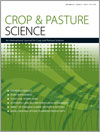The root-lesion nematode, Pratylenchus thornei, can reduce wheat yields by >50%. Although this nematode has a broad host range, crop rotation can be an effective tool for its management if the host status of crops and cultivars is known. The summer crops grown in the northern grain region of Australia are poorly characterised for their resistance to P. thornei and their role in crop sequencing to improve wheat yields. In a 4-year field experiment, we prepared plots with high or low populations of P. thornei by growing susceptible wheat or partially resistant canaryseed (Phalaris canariensis); after an 11-month, weed-free fallow, several cultivars of eight summer crops were grown. Following another 15-month, weed-free fallow, P. thornei-intolerant wheat cv. Strzelecki was grown. Populations of P. thornei were determined to 150 cm soil depth throughout the experiment. When two partially resistant crops were grown in succession, e.g. canaryseed followed by panicum (Setaria italica), P. thornei populations were <739/kg soil and subsequent wheat yields were 3245 kg/ha. In contrast, after two susceptible crops, e.g. wheat followed by soybean, P. thornei populations were 10 850/kg soil and subsequent wheat yields were just 1383 kg/ha. Regression analysis showed a linear, negative response of wheat biomass and grain yield with increasing P. thornei populations and a predicted loss of 77% for biomass and 62% for grain yield. The best predictor of wheat yield loss was P. thornei populations at 0–90 cm soil depth. Crop rotation can be used to reduce P. thornei populations and increase wheat yield, with greatest gains being made following two partially resistant crops grown sequentially.
How to translate text using browser tools
4 April 2014
Wheat biomass and yield increased when populations of the root-lesion nematode (Pratylenchus thornei) were reduced through sequential rotation of partially resistant winter and summer crops
K. J. Owen,
T. G. Clewett,
K. L. Bell,
J. P. Thompson
ACCESS THE FULL ARTICLE

Crop and Pasture Science
Vol. 65 • No. 3
April 2014
Vol. 65 • No. 3
April 2014




